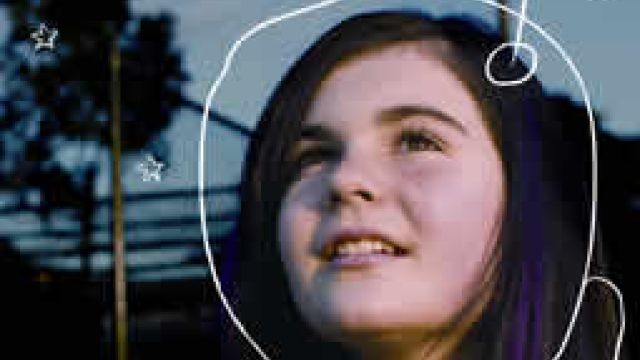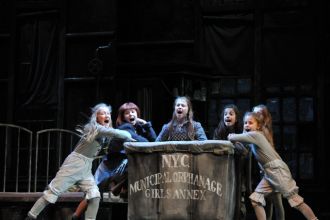Across Victoria during Autumn children entering secondary school in 2013 will tour prospective schools with their parents, yet there will be few enquires
about school ‘sun smart’ policy. After years of diligence in kindergartens and
primary school, such questions slip off the parental radar, despite the fact around 80% of all Victorian secondary schools
do not have a comprehensive policy.
Few parents
would fail to be outraged if schools allowed students to smoke because of known
health risks, yet the odds of Australian children developing skin cancer are
considerably higher. Australia is the skin-cancer capital of the world. Half
the population are expected to develop skin cancer in their lifetime, with
around 1 000 people treated for the disease each day, and 1 600 dying each year.
But research suggests as many as 75% of all skin cancers could be prevented by
practicing sun protection in childhood and adolescence.
Parents Australia wants the issue taken
far more seriously, and advocates parental involvement. Vice-President, Margaret Pledger, says some
schools appear more concerned about developing a “private school image”, than
facing up to their duty-of-care to students. Mrs Pledger, who recently had
moles removed from her hands, believes it is highly likely her own secondary-aged
children will develop skin cancer, but they refuse to wear hats at school
because no-one else does. “It is completely frustrating, but there is nothing I
can do about it,” she says.
SunSmart’s Secondary School Sun Protection Program
assists secondary schools to implement an effective sun protection policy,
offering a graduated approach with consideration of the particular challenges
of adolescent sun protection behaviours. State-wide only 56 secondary schools
have joined the program to date, with
the majority located in rural and regional Victoria.
Parents cannot
assume because a hat appears on the uniform list it will actually be used. While
many schools profess baseball caps mandatory for physical education classes in
terms one and four, they seem unwilling or unable to enforce their use. Every
year at Dobsons, uniform supplier to
more than 50 Victorian schools, hats are sold to Year 7 students. “We give all
the Year 7s a hat, and when they come back the next year their parents say it
sat in the bottom of a wardrobe all year,” says Dobsons floor manager Sally.
Teachers
frequently become agitated by the sunhat question because they are keen to
minimise confrontational situations, nurturing positive relationships, rather
than pulling students up for wearing trousers in the wrong shade of grey. In an
attempt to by-pass the hat battle, many schools are opting to erect shade
structures with some success. A recent study published in the British Medical
Journal found that where shade is provided, students will not avoid it.
Research suggests
that improved sun-protection practices are more effective where whole
communities work consistently together to find a solution. In 2007 an American
Academy of Paediatrics study on adolescent sun-protection practices
demonstrated the power of role modelling. After observing the sun protection
level of 1 927 people in Year 6 to 8 at school, staff, sports coaches,
lifeguards and adolescent peers were enlisted as advocates for better sun
protection behaviours. After two years, the group was more likely to cover-up a
greater percentage of their skin, when compared with a control group, and were
more likely to use sunscreen, and to apply it more effectively.
At Kyabram
Secondary College in Victoria’s north, the risk of skin cancer is also taken
seriously, with expectations about wide-brimmed sunhats uppermost in the
uniform policy guidelines. Physical Education coordinator Marcus Cummins says
while the school’s record with sunscreen needs work, it is serious about hats.
But it takes a great deal of energy to maintain the standard.
At Kyabram, the
emphasis is on re-education, not punishment. Students who consistently fail to
wear a hat are enlisted in an education campaign over 3-4 days watching DVDs
about skin cancer, completing worksheets on the identification of different
forms of skin cancer, and working out how they are going to get a wide-brimmed
hat for school.
Aquinas College
in Melbourne’s east tried unsuccessfully for a decade to get students to wear
hats, before adopting a less punitive approach. Students were told hats would
be mandatory, but were actively involved in the decision about style and
colour. These days students wear a SunSmart approved Billabong hat in sage green, which bears no school logo, making it
more acceptable to students. Aquinas students can sit in the shade without
wearing the hat, but they must have it with them at all times.
After four years
students and staff have mostly accepted the changes, but it would have been
virtually impossible without support from the principal and staff. “It’s a
really tough thing to do, but we have made huge headway,” says Health and
Welfare Coordinator Cheryl Kane who has sun protection included in her job
description. But “unless you have someone who is prepared to continually bang
their head against the wall, it’s just too hard,” she says.
Aquinas students
are philosophical about their school hat. “Wearing hats is ok, we don’t love it
but it’s not a huge deal anymore,” said a Year 11 girl. “It’s really just for
our own good,” said a Year 9 boy, and there is “no point teaching it in class
if you don’t make us actually do it,” pointed out a Year 8 boy. “I don’t really
care too much so am pretty happy to wear a hat. It’s pretty much for our own
good – you don’t have to let the teachers know you like it – LOL.”
When asked why
they thought Aquinas had introduced a sunhat policy, students said: “Because we
live in Australia, and there is so much skin cancer...It’s a huge
problem.” Another student wrote, “I
think the school wants us to know how to look after ourselves.” And another
thought the school had hats “because it’s the right thing for the school to
do.”
Because schools
are influenced by the values of their local communities, perhaps it should come
as no surprise Victoria’s sun protection record is the worst in the country. After
28 years of skin cancer campaigns, the sight of hundreds of hatless students
dawdling home from school in 35 degree heat might well have elicited complaints
from a concerned local community. But according to a Cancer Council report, of
all Australians, Victorians are the least likely to wear a broad-brimmed hat
and sunscreen, with 25% of adolescents and 14% of adults getting sunburnt on a
typical summer weekend.






